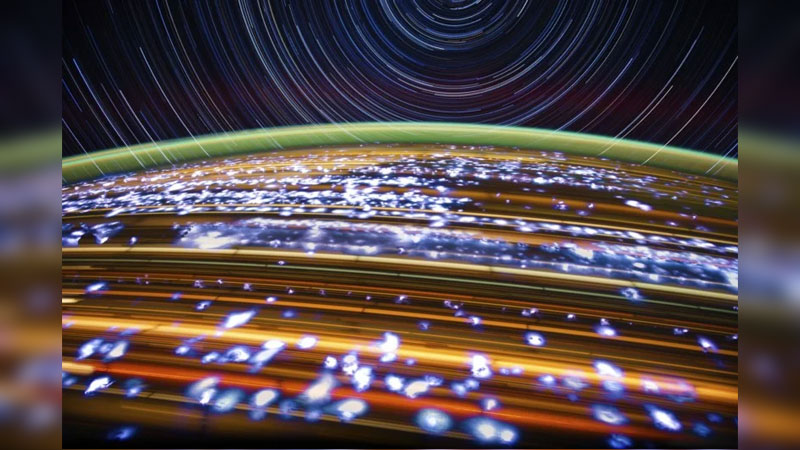
Veteran astronaut and esteemed astrophotographer Don Pettit has recreated one of his most iconic photos on his most recent mission to space.
Pettit took Lightening Bugs in 2012 while on Expedition 30, an incredible photograph using a long exposure to create stunning star trails.
Pettit is currently aboard the ISS, and recently shared a video showing how he changes his Nikon Z9 lenses in zero gravity.
Star trail time exposure. Our orbit creates star trails during a time exposure, in this case, about 30 minutes during orbital night. This was assembled from multiple 30 second exposures by @BabakTafreshi. Big thanks to Babak for applying his processing skills with image… pic.twitter.com/4SQrFshmghFebruary 8, 2025
“Our orbit creates star trails during a time exposure, in this case, about 30 minutes during orbital night,” he explains. “This was assembled from multiple 30-second exposures by @BabakTafreshi. Big thanks to Babak for applying his processing skills with image processing capability we do not have on orbit.”
Babak Tafreshi is a National Geographic photographer who focuses on capturing celestial images. Explaining on an Instagram post about the difference between star trails from Earth, and from space, he said:
"These animated timelapse sequences show something in common: long exposure images reveal moving stars as trails. But the source of motion is totally different on each. On the ground, the Earth rotation is the source. When the camera is pointed north toward Polaris (or south, in the southern hemisphere) circular trails appear around celestial poles which show the earth axis of rotation.
“In the orbit, the source of star trails is the space station motion, orbiting Earth every 90 minutes with ~ 16 sunrises and sunsets every day! When Don Pettit points the camera towards the pitch axis of ISS (and not towards Polaris), circular star trails are formed above the Earth limb, and below are streaking city lights (again due to orbital motion), lightning flashes, aurora, and atmospheric airglow.
“From Above & Under aims to provide perspectives to our planet from two humans separated by 400 km of air and outer space. The project also aims to initiate potential Earth-space coordinated photography collaborations for research, conservation, art, and public outreach.”
Tafreshi and Pettit are currently working on a project together called Above & Under, sharing perspectives of Earth while being separated by 250 miles (400 kilometers) of air and outer space.
While space might be slightly out of your reach, you can take a look at our guides to the best cameras for astrophotography, the best Nikon cameras, and the best lenses for astrophotography.







